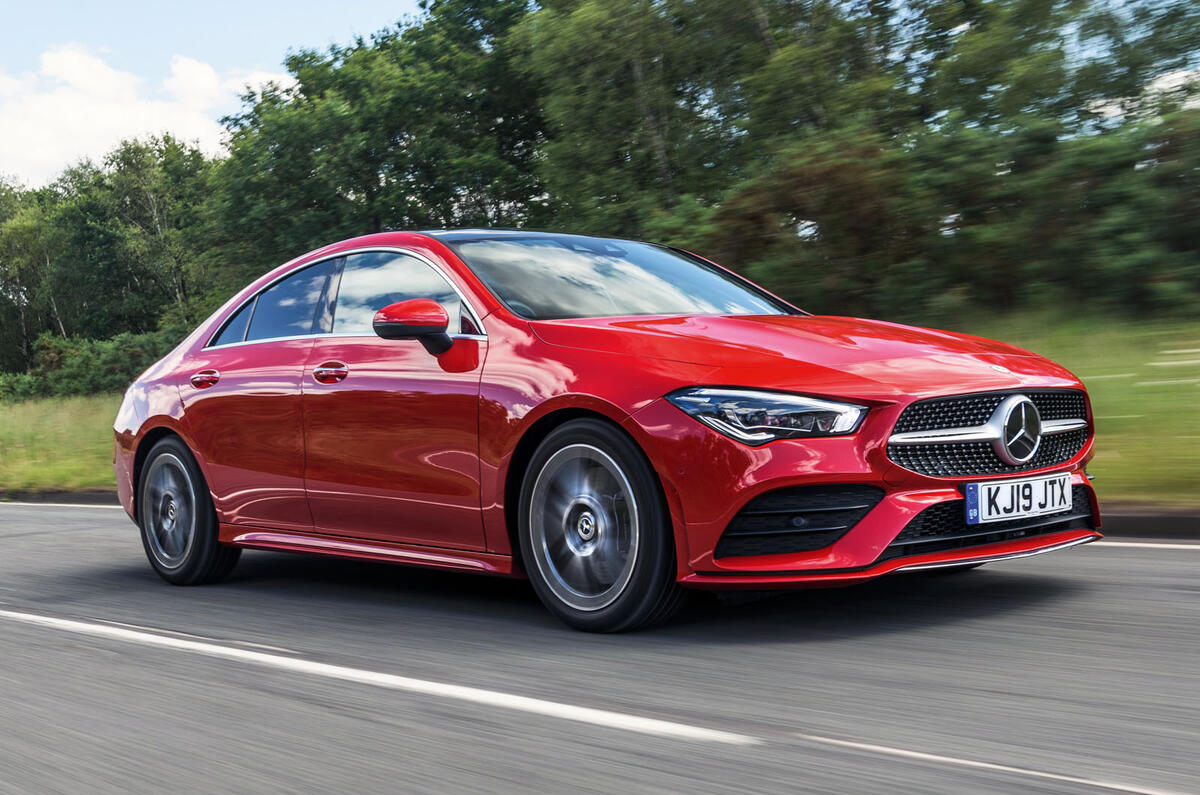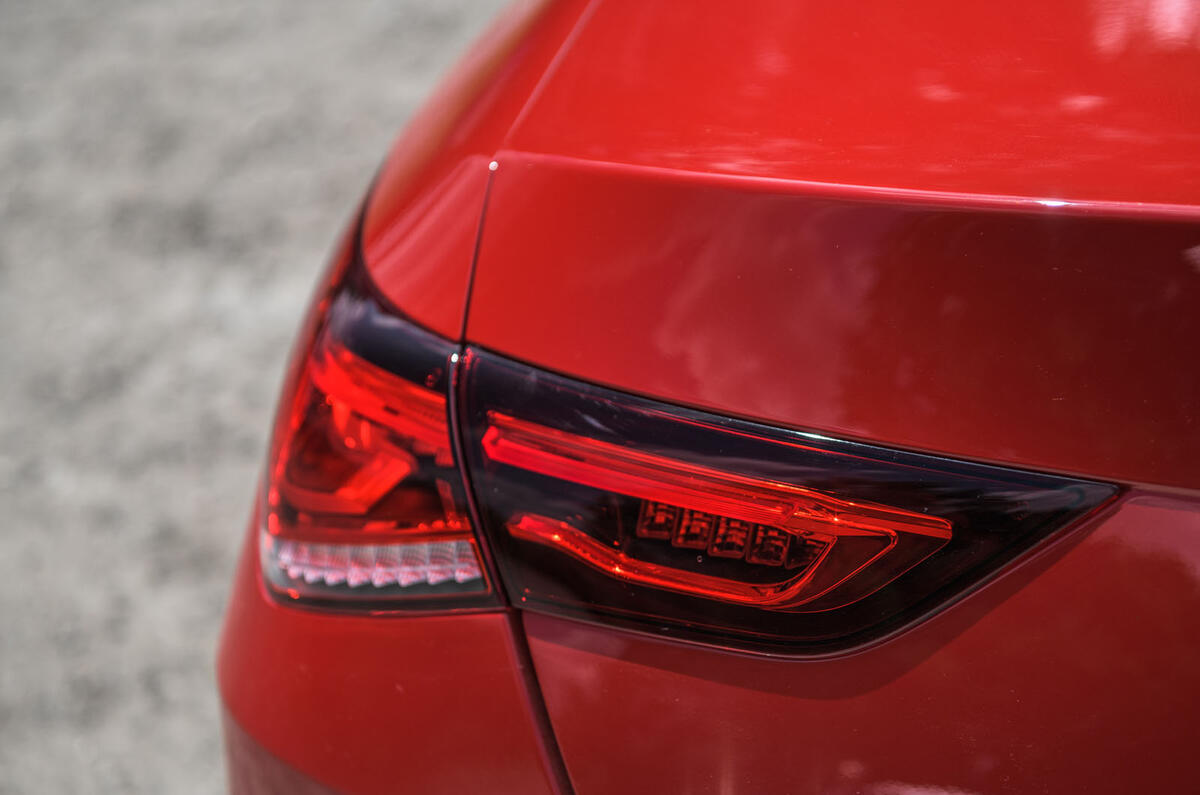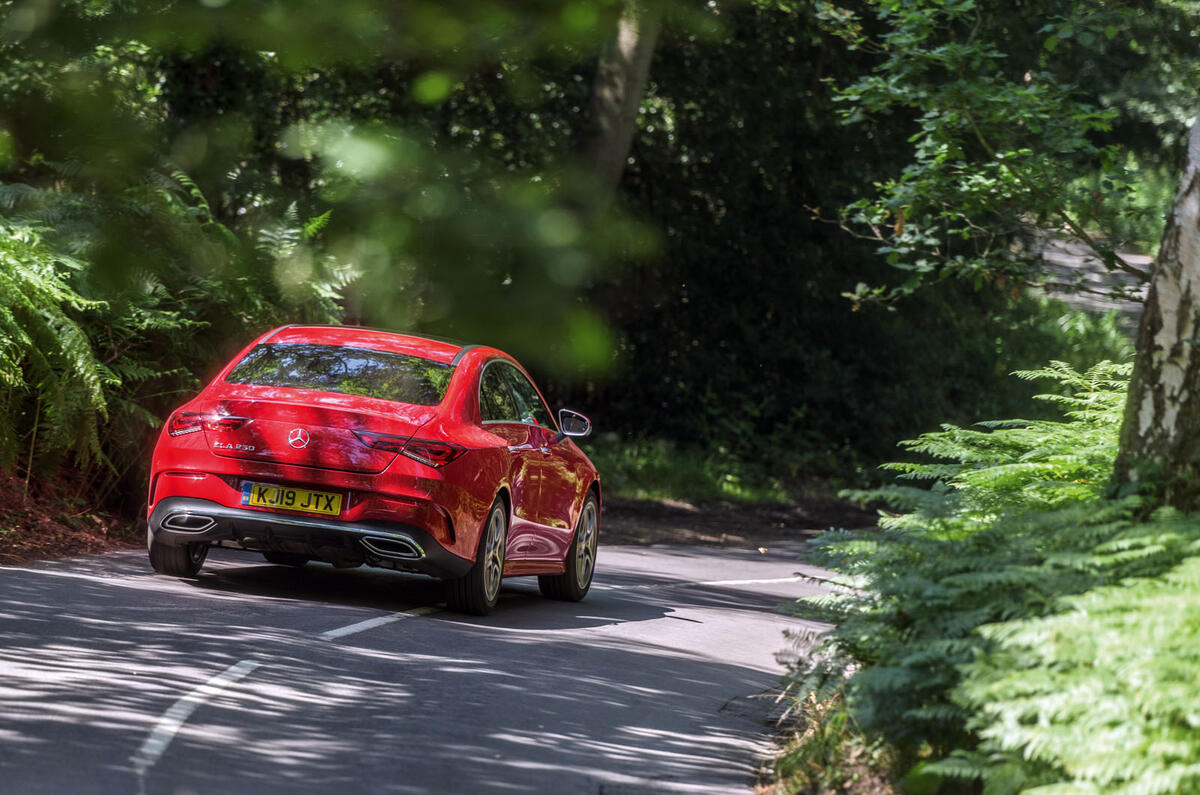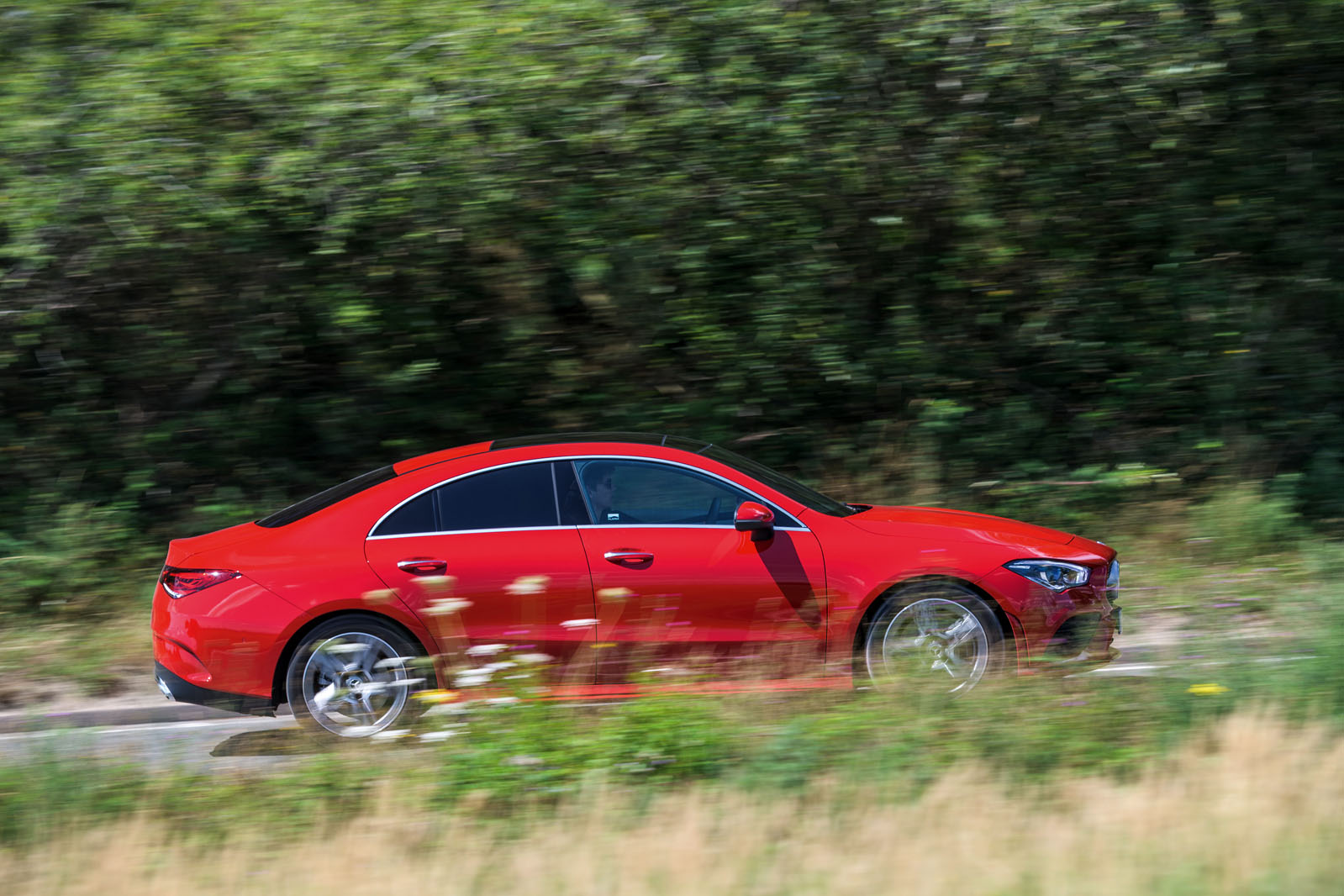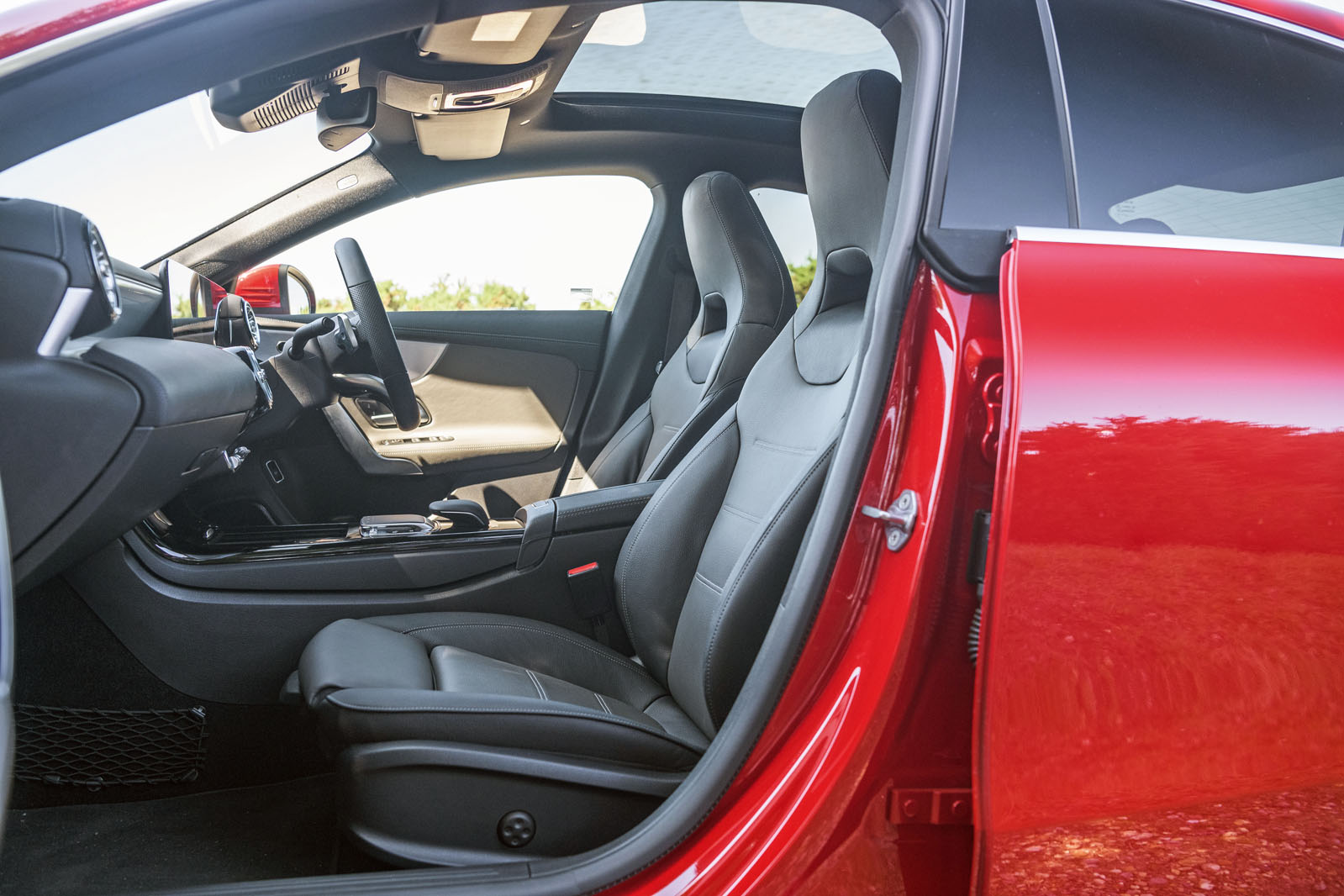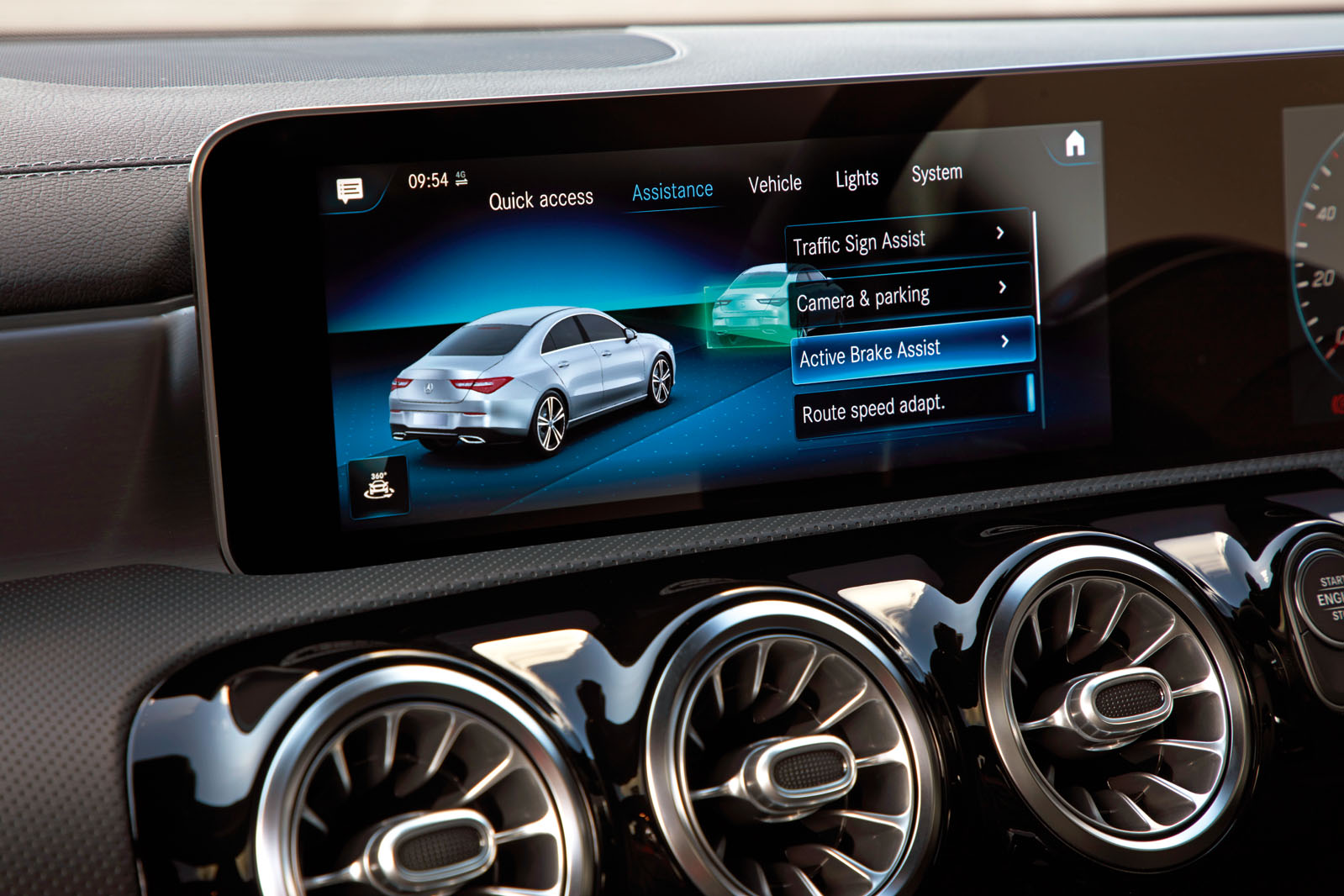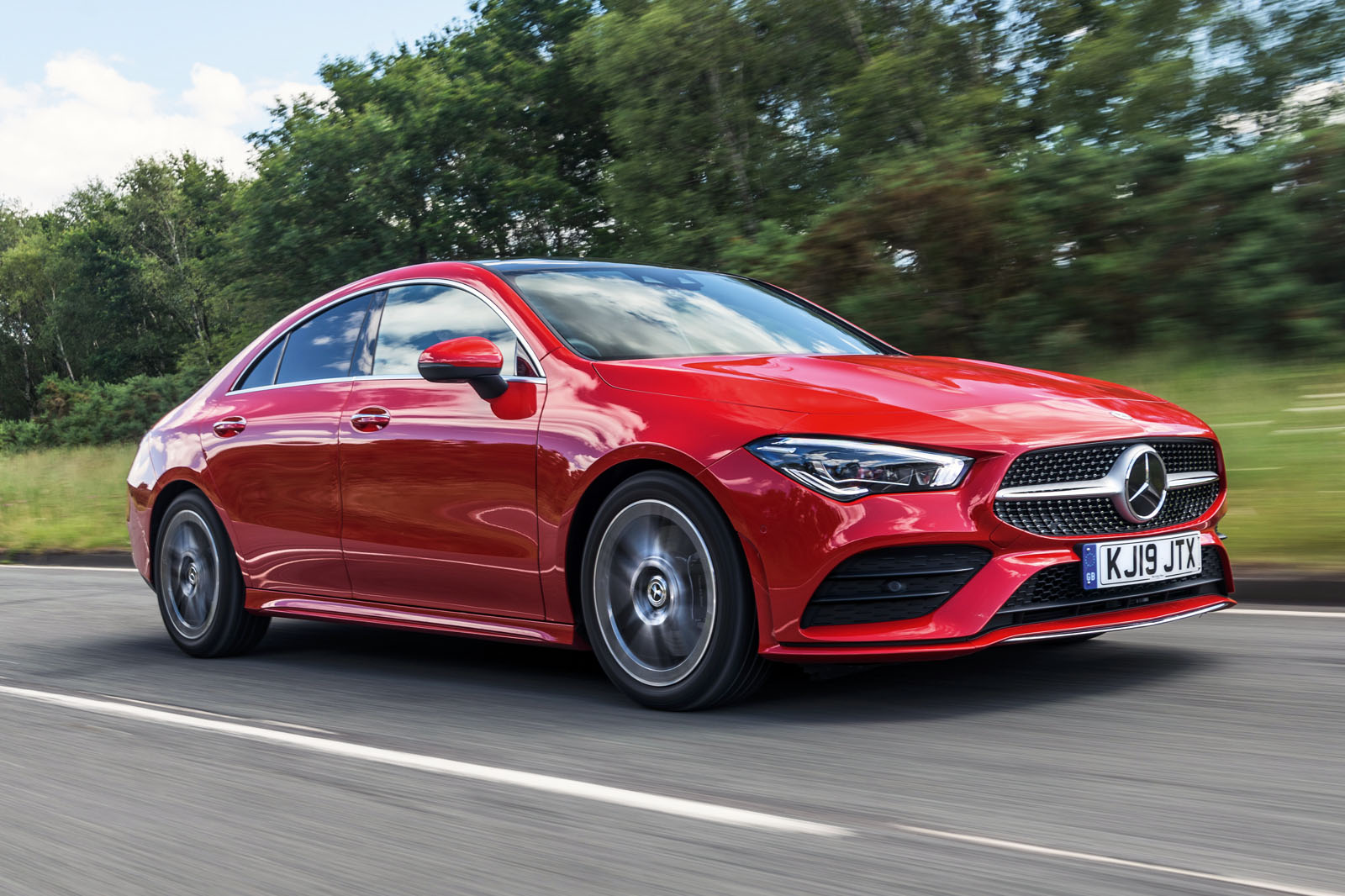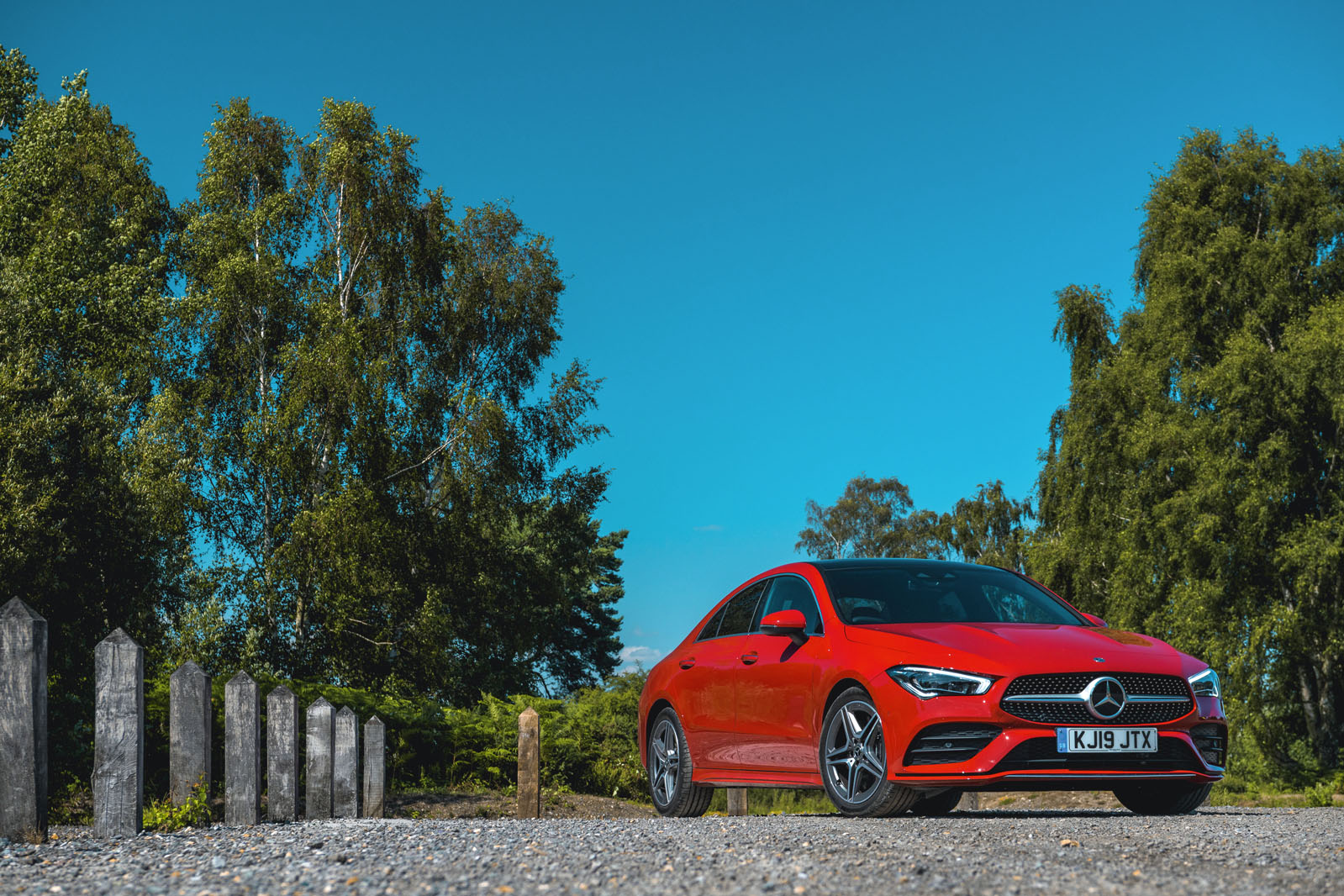COMFORT AND ISOLATION
At a basic level – in respect of what’s afforded by its seats and the orientation of its controls – the CLA is a pretty comfortable car and its wind insulation is competitive, too. However, its ride comfort and isolation are notably short even of that of the better examples of the current Mercedes-Benz A-Class that we’ve tested, which means that it trails its better direct rivals in those respects by some distance.
Much as the car’s engine is more noisy and strained than you would like when it’s working at high revs, so does its suspension seem oddly conductive over rough bitumen. It’s also restive and given to rebound over uneven roads, and more clunky over bigger, sharper edges than is becoming for a premium saloon – even if it does happen to be one with a pseudo-sporting brief.
There’s a fairly insistent amount of background noise to the car’s ride on certain surfaces, which makes Mercedes’ decision to adopt those hydraulic front suspension bushes look like a bit of a half-measure. Add one or two sharper edges, expansion joints or bits of broken roadway into the mix and the sense of brittleness that the CLA’s suspension suffers with becomes plain enough for anyone in the car to notice it.
On well-surfaced sweeping A-roads, you are kept retained and are well supported by the car’s seats and by its resistance to body roll, and the CLA makes fairly fast progress seem slick and unwearing. But as the road topography deteriorates, so does that sense of slick composure – and quite sharply and starkly, too.
Over a testing B-road, the suspension seems to have insufficient compliance and dexterity to absorb even medium-sized intrusions taken at a moderately keen pace, instead running short of travel and tending to bound from one bump to the next, while inputs working one side of its axles and not the other often elicit a surprising amount of head toss from what is a fairly low-slung car.
ASSISTED DRIVING NOTES
The CLA offers more ‘semiautonomous’ driving tech than most cars of its size, type and price, and more effective assisted driving tech.
Spend £1495 on the Driving Assistance pack and you’ll get a car that can change lanes by itself on the motorway, but only when it’s safe to do so; can intervene with braking to prevent you wandering into the path of a car coming either head-on or at a T-junction; and can adopt temporary gantry speed limits by itself.
The speed limit detection system doesn’t quite catch every posted limit and usually waits until passing a sign before starting to adjust speed but it can be relied on by and large. Some will find the car’s default reactivation of its lane-keeping and autonomous braking systems with every restart annoying. But generally, the CLA’s assisted driving systems work well when they’re on, are cleverly and progressively tuned, and are switchable and tunable to your tastes.
EMERGENCY BRAKING Is the system more than averagely prone to ‘false positive’ activation? ✓ Can its sensitivity be adjusted? ✓ Can it be deactivated entirely? ✓
LANE KEEPING Does the system keep the driver engaged when activated? ✓ Can you easily avoid a pothole without deactivating it? ✓ Does it progressively warn, then intervene, to prevent you changing lanes into the path of an overtaking vehicle? ✓ Does it work equally well on single-track roads as motorways? ✗ Once deactivated, does it stay off even after restart? ✗
INTELLIGENT CRUISE CONTROL Can the system recognise and automatically adopt speed limits on posts and gantries? ✓ How consistently does it work? 80% Does it prevent you undertaking? ✓


